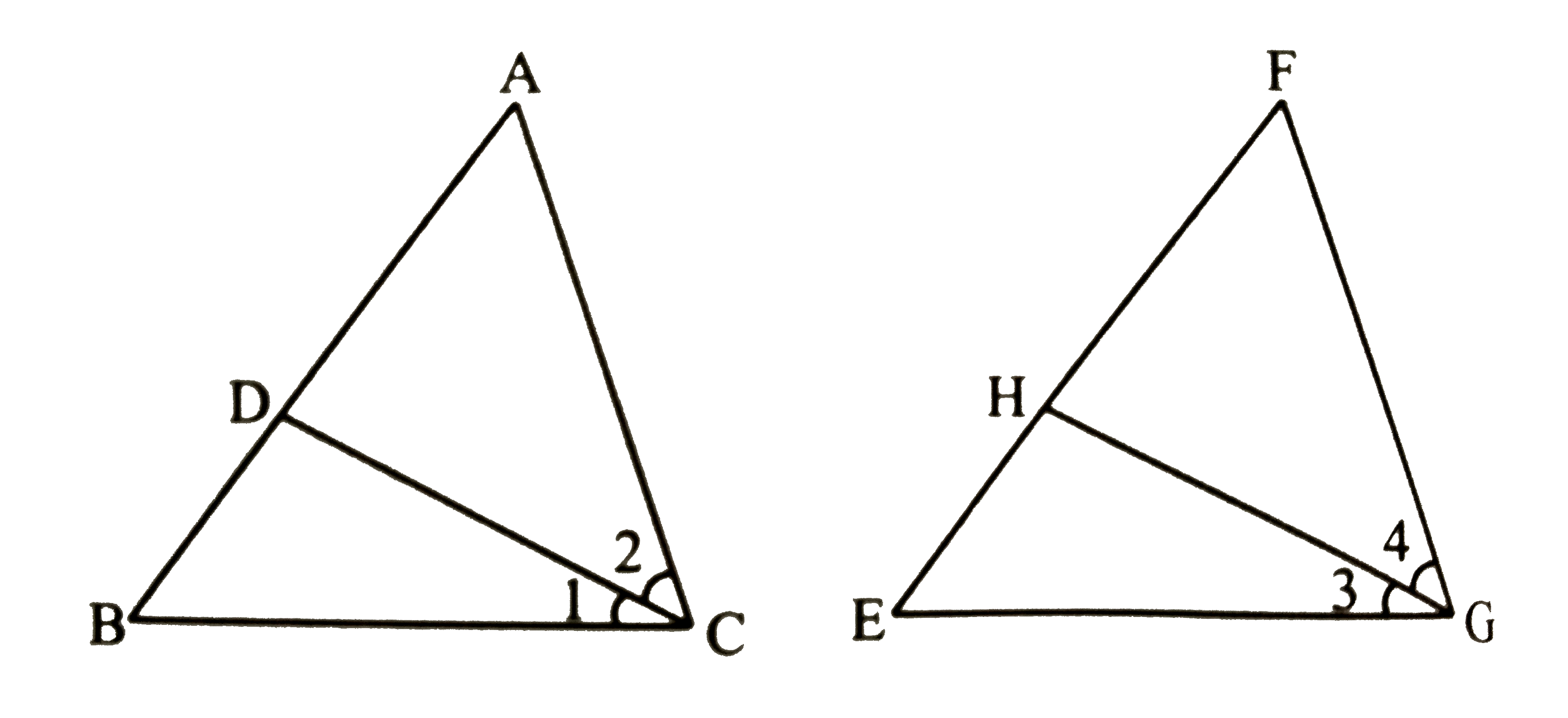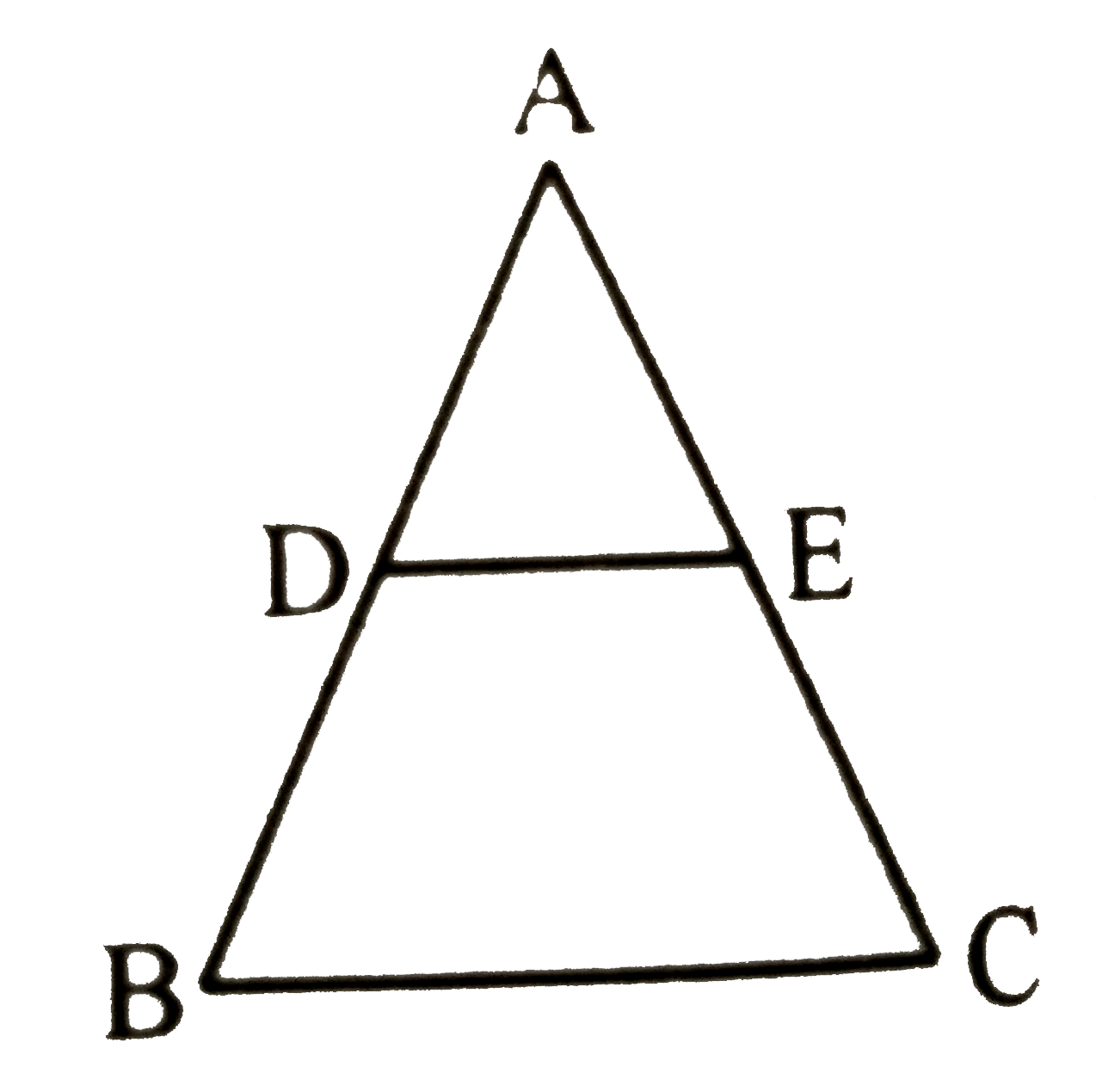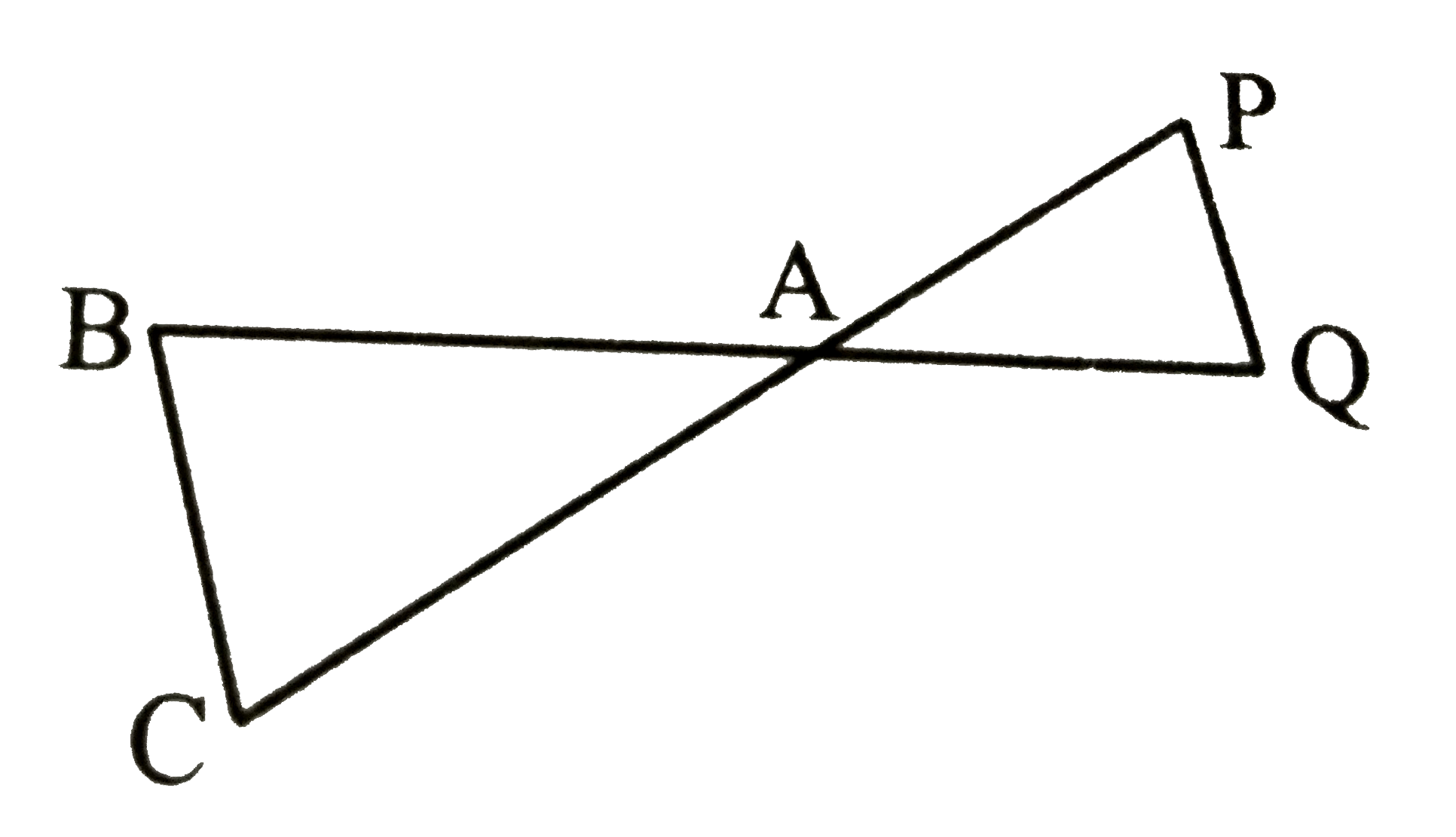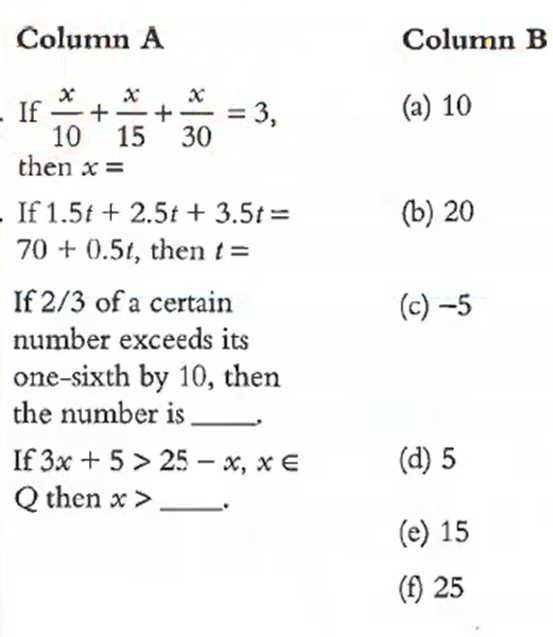यदि CD तथा HG (D तथा H, AB तथा FE पर है |) क्रमशः ∠ACB तथा ∠EGF के अर्द्धक है तथा △ABC~△FEG तो सिद्ध कीजिए कि :
(i) △DCA~△HGF
(ii) CDGH=ACFG
(iii) △~△HGE

चूँकि △ABC~△FEG (दिया है )
इसलिए,
∠A=∠F तथा ∠C=∠G
⇒12∠C=12∠G
⇒∠1=∠3 तथा ∠2=∠4
अब △ACD तथा △FGH में, ∠A=∠F
∠2=∠4
तब समरूपता की AA-कसौटी द्वारा,
△ACD~△FGH या △DCA~△HGF
(ii) समी० (i) से, △ACD~△FGH
⇒ACFG=CDGH
(iii) △DCB तथा △HGE में, △DCB~△HGE
Topper's Solved these Questions
- त्रिभुज BOOK - BALAJI PUBLICATIONCHAPTER - त्रिभुज EXERCISE - अभ्यास प्रश्न 7.1
9 Videos
- त्रिभुज BOOK - BALAJI PUBLICATIONCHAPTER - त्रिभुज EXERCISE - अभ्यास प्रश्न 7.2
17 Videos
- त्रिकोणमितीय अनुपात एव असमिकाएँ BOOK - BALAJI PUBLICATIONCHAPTER - त्रिकोणमितीय अनुपात एव असमिकाएँ EXERCISE - स्वमूल्यांकन परीक्षण
35 Videos
- दो चर वाले रैखिक समीकरण युग्म BOOK - BALAJI PUBLICATIONCHAPTER - दो चर वाले रैखिक समीकरण युग्म EXERCISE - स्वमूल्यांकन परीक्षण
29 Videos
Similar Questions
दी गई आकृति में DE∣∣BC यदि AD=2.5 सेमी, DB = 3 सेमी तथा AE = 3.75 सेमी है तो AC का मान ज्ञात कीजिए |

View Solutionदी गई आकृति में △ACB~△APQ है यदि BC=8 सेमी०, PQ=4 सेमी०, BA = 6.5 सेमी०, AP = 2.8 सेमी० है तो CA तथा AQ ज्ञात कीजिए |

View Solutionयदि cosθ=1√122, तब sinθ व tanθ के मान ज्ञात कीजिए.
View Solutionकिसी भिन्न के अंश से यदि 1 घटाया जाये तो वह 13 तथा यदि हर में 8 जोड़ा जाये तो वह 14 हो जाती है। भिन्न ज्ञात कीजिए।
View SolutionIn the figure above (not to scale), ¯¯¯¯¯¯AB⊥¯¯¯¯¯¯CDandAD is the bisector of ∠BAE.AB=3cm and AC=5cm. Find CD.
View SolutionMatch the following Column A to Column B

View SolutionIn the figure (not to scale) AB = AC and BD = CD. Find ∠ADB
ltimg src="https://d10lpgp6xz60nq.cloudfront.net/physics_images/PS_MATH_IX_C15_E05_003_Q01.png" width="80%"gt
View Solutionमाना कि △PQR एक त्रिभुज है तथा →a=−−→QR,→b=−−→RP तथा →c=−−→PQ है | यदि |→a|=12,∣∣→b∣∣=4√3 तथा →b.→c=24 तो निम्न में से कोण-सा (से) सही है
View SolutionCD and GH are respectively the bisectors of ∠ACB and ∠EGF such that D and H lie on sides AB and FE of △ABC and △EFG respectively. If △ABC~△FEG, show that :-CDGH=ACFG .
View SolutionCD and GH are respectively the bisectors of ∠ACB and ∠EGF such that D and H lie on sides AB and FE of △ABC and △EFG respectively. If △ABC~△FEG, show that :- △DCB~△HGE .
View SolutionCD and GH are respectively the bisectors of ∠ACB and ∠EGF such that D and H lie on sides AB and FE of △ABC and △EFG respectively. If △ABC~△FEG, show that :- △DCA~△HGF .
View SolutionCD and GH are respectively the bisectors of ∠ACBand∠EGFsuch that D and H lie on sides AB and FE of △ABCand△FEG respectively. If △ABC~△FEG.show that:(i)CDGH=ACFG
View SolutionCD and GH are respectively the bisectors of ∠ACBand∠EGFsuch that D and H lie on sides AB and FE of △ABCand△FEG respectively. If △ABC~△FEG.show that:(ii)△DCB~△HGE
View SolutionCD and GH are respectively the bisectors of ∠ACBand∠EGFsuch that D and H lie on sides AB and FE of △ABCand△FEG respectively. If △ABC~△FEG.show that:(iii)△DCA~△HGF
View SolutionIn a triangle ABC, AB = 12, BC =18 and AC = 15. The medians AX and BY intersect sides BC and AC at X and Y respectively. If AX and BX intersect each other at O, then what is the value of OX? एक त्रिभुज ABC में, AB = 12, BC =18 तथा AC = 15 है। मध्य रेखा AX तथा BY, भुजा BC तथा AC को क्रमशः X तथा Y पर प्रतिच्छेद करती है। यदि AX तथा BY, O पर प्रतिच्छेदन करते हैं, तो OX का मान क्या है?
View SolutionThe sides AB and AC of a triangle ABC are extended to P and Q respectively. If the bisectors of angle PBC and angle QCB intersect at O, and angle A=92^@ , then angle BOC is equal to: एक त्रिभुज ABC की भुजाओं AB और AC को क्रमशः P तथा Q तक बढ़ाया जाता है | यदि angle PBC तथा angle QCB के समद्विभाजक एक दूसरे को O पर काटते हैं तथा angle A=92^@ है, तो angle BOC किसके बराबर है ?
View Solution
